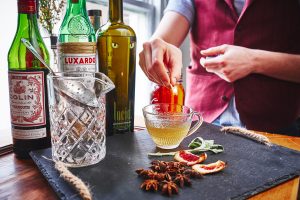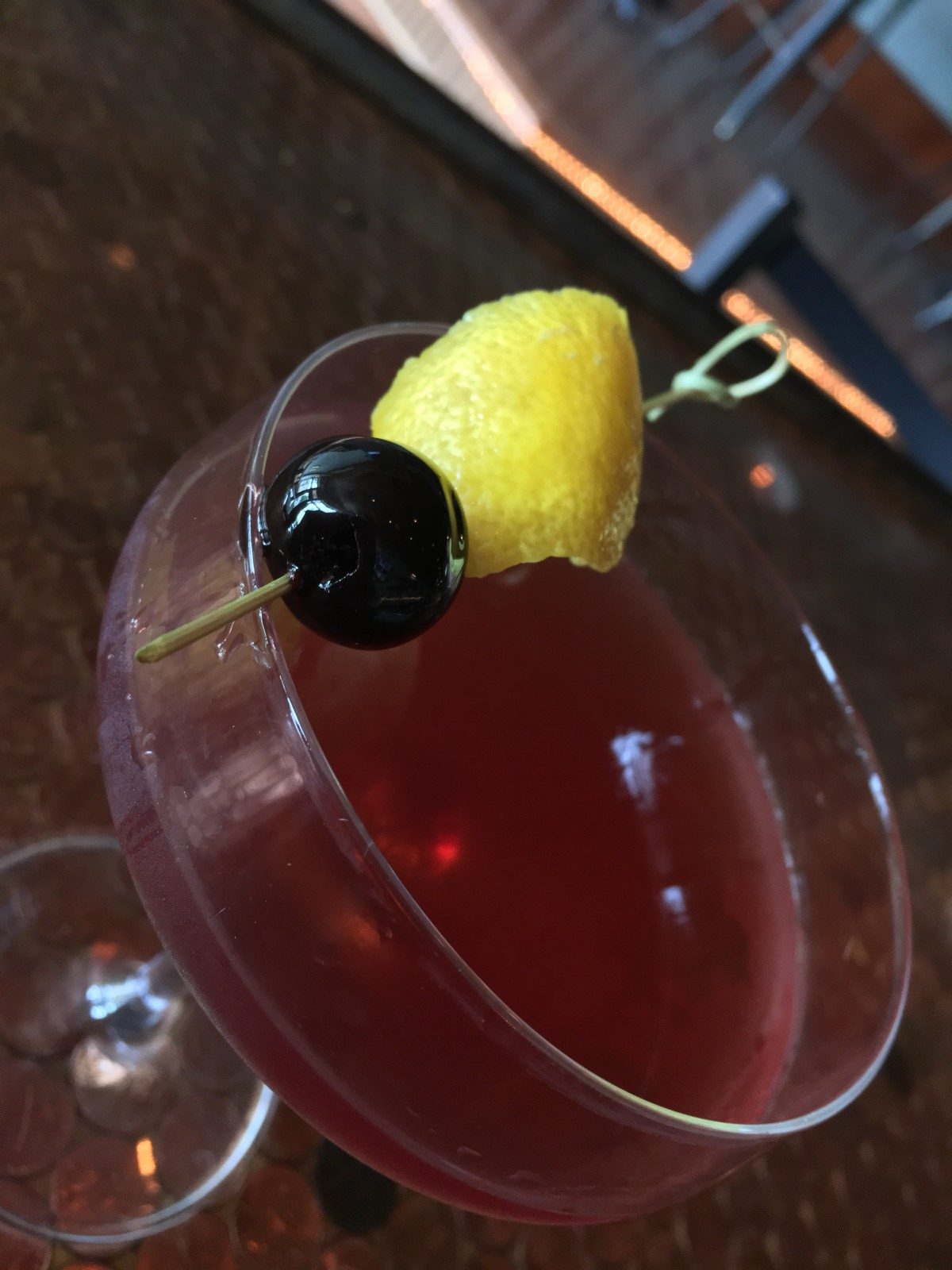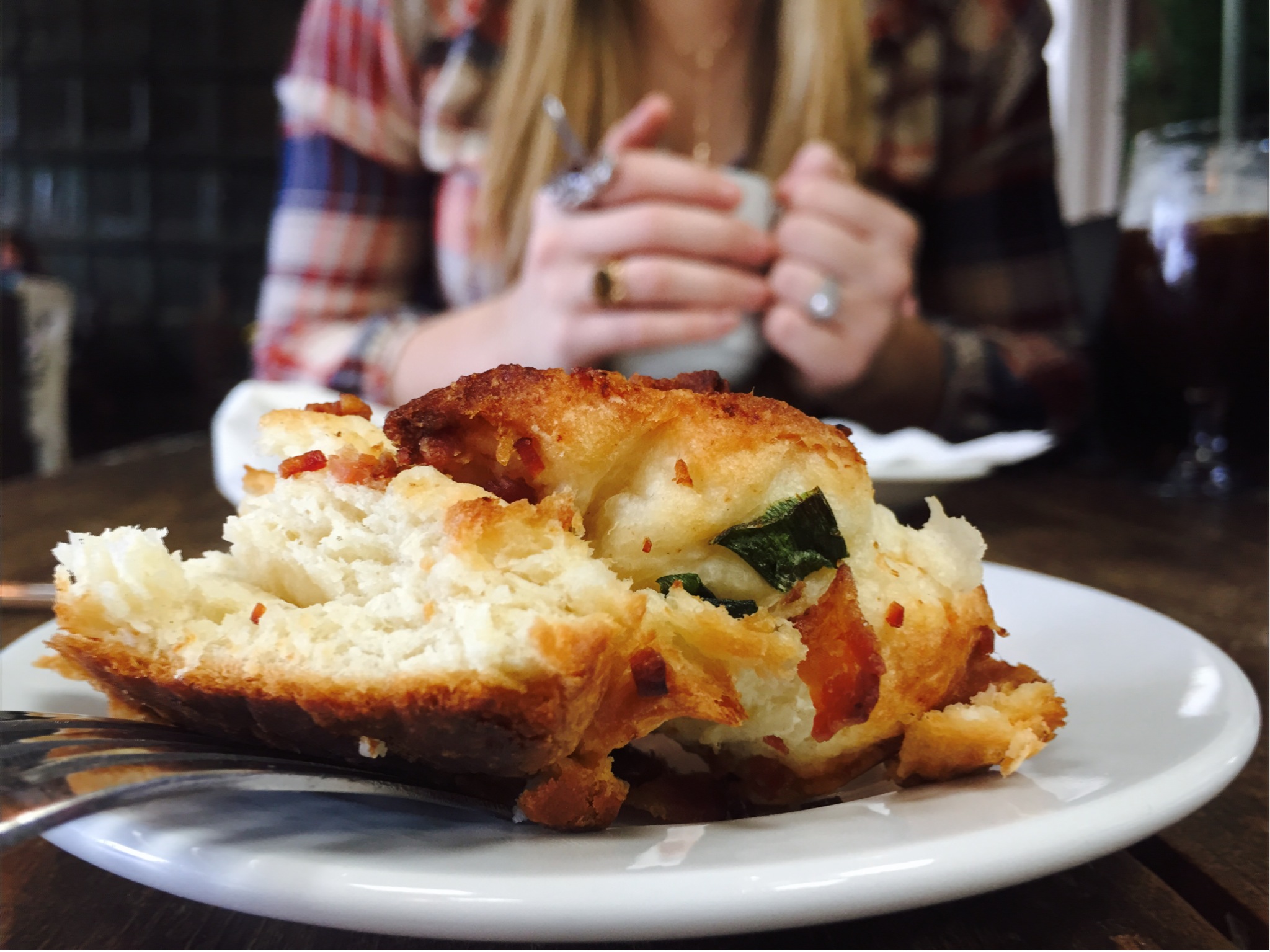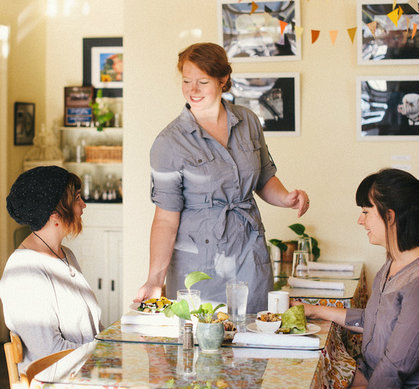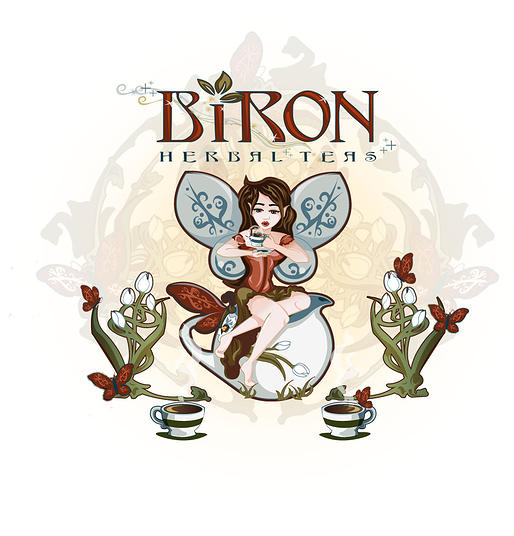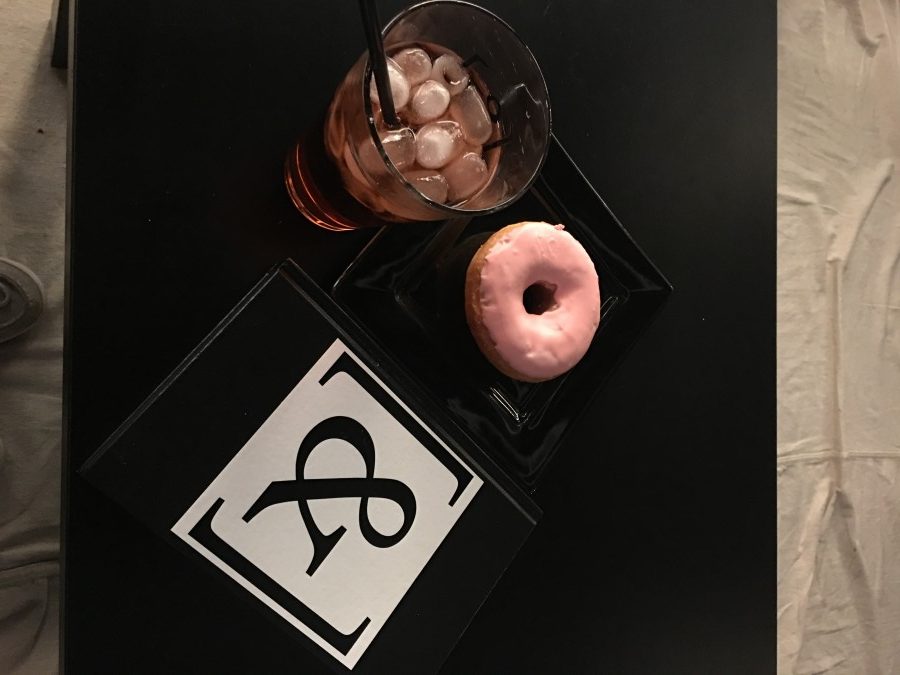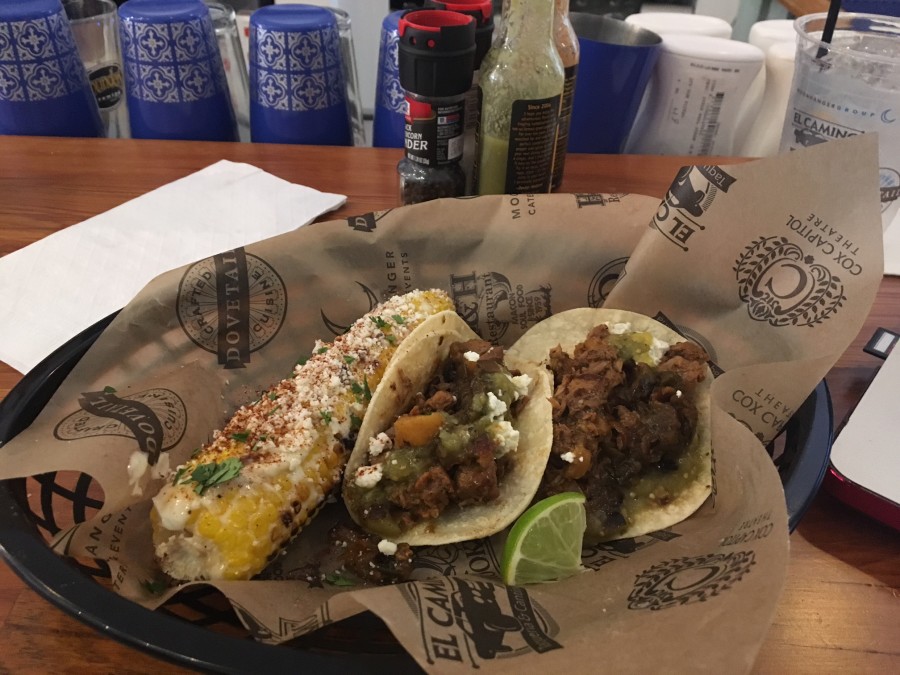Tender’s Technique: Flaming a Citrus
Every night I get behind a bar and do something fancy, I’ve got patrons and regulars alike asking, “How in the world did you do that?” And oftentimes, “Why?” It’s with this in mind, that I’ve decided to start doing a reoccurring post on cocktail technique. This way, when any of my recipes call for a flourish or something a little out of the ordinary yall will have a resource of A:’s to all of your Q:’s.
Where to start? I’m thinking we go with something that just looks damnably cool.
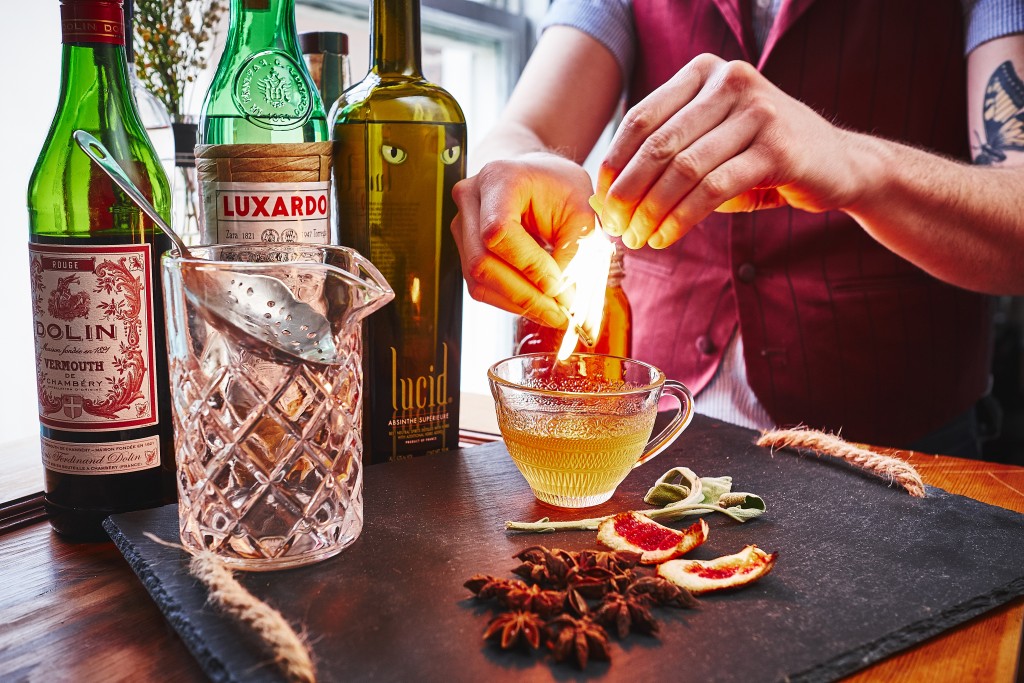
Get it? Damnable…like hell fire. Yes? No? Just get on with it? Fine, fire pun humor aside, today we’re going to be talking about flaming citrus oil. I’m certain if you’ve ever spent any time perched up at your local watering hole, you’ve seen a barkeep pinch or twist a swath of freshly peeled citrus skin over a drink. The reason for this is, much like your skin, the skin surrounding citrus fruits is full of pores. More technically stated, “This colorful outer skin [of a citrus] is called the flavedo, which contains essential oils, wax, fatty acids, and limonene, a fragrance producing compound.” (Morganthaler, 274). The essential oils contained within the pores of the flavedo (yes you just learned a fancy word to impress/ alienate your friends) are highly flammable. So when squeezed over an open flame, well you get the picture. Literally. Behold, the correct use of “literally”. #grammargeeksunite
Besides looking cool, what’s the point of doing this, you ask? Remember the limonene, the fragrance compound contained within the flavedo? This compound can add an aromatic dimension to your beverage. In doing so, it mimics a component of wine tasting, called the bouquet. The bouquet refers to the initial smell of the wine, which in turn adds to the taste. Fun fact, as some of yall may already know, 70 to 75 percent of what we perceive as taste is actually more to do with smell. Accordingly, when you ignite the oil, which contains the limonene, it will not only smell like the fruit you’re using, but it will also give the drink a caramel-like dimension.
Now that you have the what and the why, let’s talk about the how.
First: Cut a quarter to half-dollar sized “coin” of flavedo from a citrus with a firm rind. Note: Softer rind-ed citrus won’t release the oil as easily, if at all, when squeezed. Which will leave you looking like a loser in front of your friends OR EVEN WORSE a full bar. So be a stickler with feeling up your fruit or face public shaming.
Second, light a match and hold it above your drink. You could use a lighter here, but the gas permeates the flavedo. If you’re planning on dropping that garnish on into the drink, well it ends up tasting a bit like lighter fluid. Gross. Plus, look how well dressed you are. You’re wearing a vest for goodness sakes. Have some pride.
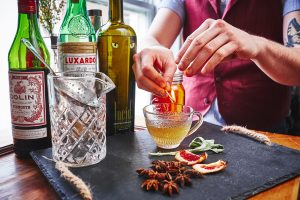 Next, hold your coin of flavedo over the flame and move it back and forth. You don’t want to keep the skin stationary, because one you’ll burn the hell out of your finger tips and two the skin won’t get evenly heated. Do this until you begin to smell the limonene being released from the pores. It will smell like whatever fruit you’re using here. If you want to be certain it’s ready, turn the skin over. If it’s glistening like sweat on your forehead after climbing a flight of steps much too fast, it’s time.
Next, hold your coin of flavedo over the flame and move it back and forth. You don’t want to keep the skin stationary, because one you’ll burn the hell out of your finger tips and two the skin won’t get evenly heated. Do this until you begin to smell the limonene being released from the pores. It will smell like whatever fruit you’re using here. If you want to be certain it’s ready, turn the skin over. If it’s glistening like sweat on your forehead after climbing a flight of steps much too fast, it’s time.
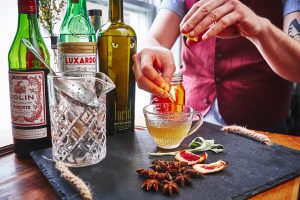 Lastly, Once you’re sure it’s that time, pull the skin up a bit, in order to ensure as much oil hits the flame as possible, the squeeze that biz.
Lastly, Once you’re sure it’s that time, pull the skin up a bit, in order to ensure as much oil hits the flame as possible, the squeeze that biz.
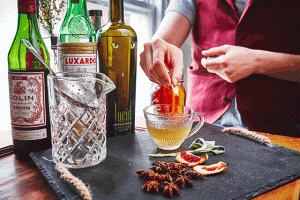 If executed correctly, it’ll look something like this. {Click the pic}
If executed correctly, it’ll look something like this. {Click the pic}
This technique isn’t meant for every drink under the sun, so I’m going to give you a recipe where it’s especially appropriate. That way you don’t feel like I’ve just wasted time you’re never getting back. In the one of my signature cocktails, called The Knuckle Duster, absinthe is one of the main components. One of the traditional preps of absinthe called the “Czech Method” is cutting the absinthe with sugar that you actually light on fire above the drink. Get where I’m going with this?
The Knuckle Duster
- 1oz Lucid Absinthe Superieure
- 1oz Michter’s Rye Whiskey
- 1oz Luxardo Maraschino Liqueur
- 3 dashes Homemade Blood Orange Absinthe Bitters
Note: Substituting Orange Bitters for my Homemade Bitters is absolutely acceptable
~Combine all ingredients in your stirring vessel
~Stir until chilled, then strain into chilled cocktail glass
~Flame a lemon skin above the drink, rim it, then discard
~Enjoy looking like a badass
Cheers!
-Yours truly.
Photo cred: Joshua Gwyn {www.jgwynart.com}
Source:
Morganthaler, Jeffrey. The Bar Book. San Francisco: Chronicle Books LLC, 2014. Print.

